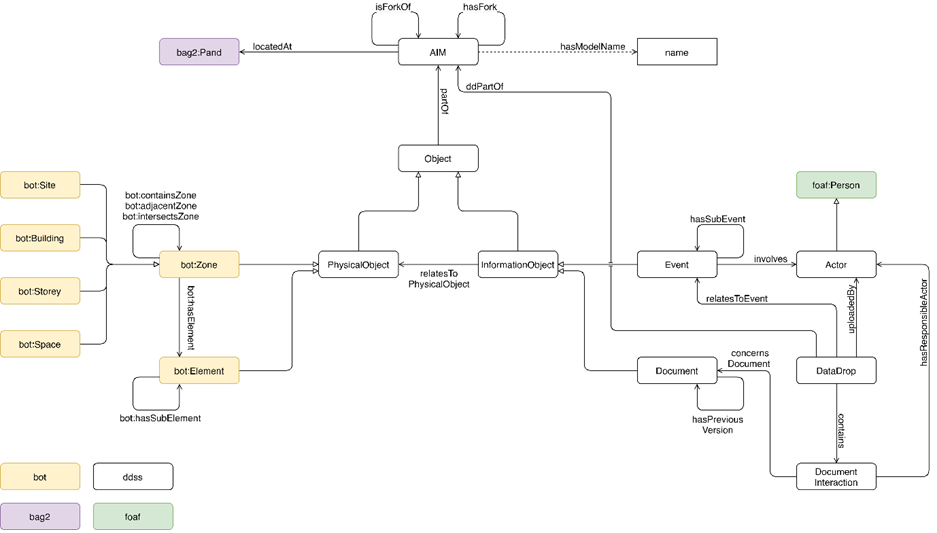Long-term availability of construction data with DDSS

Much has changed within the construction industry in the past decades. Whereas 30 years ago buildings were still mainly worked out with pen and paper, nowadays BIM is fully used. This allows all information to be easily accessed, edited and exchanged. BIM is mainly applied in the realisation phase of a building, but recently there has also been an increasing focus on digital asset management; using BIM during the operational phase of a building.
By keeping data available, the management of a building can be made much easier, and surprises, and their associated high costs, can be avoided. However, digital asset management does raise a problem. Indeed, an operational phase of 50 years is common, but some buildings stand for much longer. Compare this with the speed at which technology is developing - the first iPhone was launched just 15 years ago - and you can see that there is still a huge challenge in keeping all the BIM data developed during a building's lifetime available.
For the graduation project of my Construction Management and Engineering course, I have spent the past six months researching a solution to this problem, and below I will take you through the main findings of my research.
Three different challenges
The problem of long-term availability of building data can be divided into three different challenges.
1. Structuring data
First of all, data needs to be structured so that the right data can be easily retrieved. In today's digital world, it is very easy to create data, and with the emerging techniques of smart buildings where a building is continuously monitored, even more data is collected. Add to this the time factor and you get a huge mountain of data. To extract a specific piece of information from this huge mountain, it is important that data is structured. With the technology of linked data, and an ontology - also known as OTL - developed specifically for this purpose, data can be linked together and described exactly what which data means. This makes it easy to retrieve a specific piece of information at a later time.
2. Keeping data accessible
The second challenge of long-term availability of building data is keeping it accessible. Saving data in an open file format is nice, but if this file is then put in a corner of Sharepoint, or worse, disappears on the hard disk of a modeller's computer, this data is still of little use. It is therefore important to store data in such a way that it remains available to stakeholders. Even more important is to ensure that the parties who need the data in question in the future always have access to it. Construction projects are almost always realised by a diverse group of parties and, moreover, the composition of this group changes over the life span of a building. Parties should therefore have access to each other's data, subject to conditions, and be able to make their own copy of that data for long-term storage if a party expects to need the data later. In this way, the responsibility for keeping data available long term remains with the party that expects to need the data, and not with the party that created the data.
3. Keeping data interpretable
The third and final challenge of long-term availability of building data is keeping data interpretable. Data must be stored in such a way that the file format will still be supported by software systems one, two or even ten years from now. This cannot be taken for granted. Software suppliers of popular modelling software often only offer support for a few years and this software uses specific file formats that cannot easily be used in other software. Open and widely used standards could provide a solution here by making their documentation freely available, allowing these software formats to be opened by different software systems. Think of IFC for BIM models, but also PDF for all kinds of documents, the PCD file format for point cloud models and the CSV file format for tabular data.
Durable Data Storage System (DDSS)
To address these three challenges, as part of my graduation project, I developed a system integrating the above ideas. This system, called DDSS - an abbreviation of Durable Data Storage System - facilitates the upload and storage of data in such a way that the data remains available for a long time. The system follows the principles of the Open Archival Information System standard, a proven standard for archiving digital information, and the principles of ISO 19650, a standard for implementing BIM. DDSS consists of an online dashboard from which users can upload and download data. This dashboard is linked to a data environment in which documents, but also linked data instances, can be stored.
As I mention above, DDSS uses the principles of ISO 19650 and the Open Archival Information System standard. The latter standard describes, among other things, guidelines on how exactly data should be delivered. For instance, the context of certain data must be described, it is important that there is a track-record of how data was created and how it has changed over time, and it must be established who has access to which data. This information is stored in a linked data graph, which is structured using the DDSS ontology. This ontology is visualised (in a simplified view) in the image below.

ISO 19650
If you are familiar with ISO 19650 - which you can read more about here, by the way - you will recognise some concepts from this standard in the image above. For instance, each information object is part of an asset information model, abbreviated to AIM. ISO 19650 defines an AIM as a model that contains all the data needed to manage an asset during its operational phase. The concept of a data drop, which contains data about an asset, delivered in response to a particular event, is also integrated into the ontology. As can be seen in the image, it also stores the decomposition of a building, events that relate to the building in question, and people involved in some way with the building in question. All this should ensure that data can be easily retrieved at a later date. By incorporating the key concepts of ISO 19650 into DDSS, the system can seamlessly integrate with an organisation's BIM processes.
Forken
DDSS is also designed so that any organisation can set up and host the system itself. This avoids dependence on a third party for hosting data. To address the challenge of keeping data accessible, DDSS includes a system for forking an AIM. If a certain party A has created an AIM for an asset, and another party B thinks it needs data from this AIM in the future, then party B can create a so-called fork of this AIM. This fork is actually a copy of the original AIM, but hosted by party B. This places the responsibility for keeping data available with the party that wants to use the data later. In addition, this system facilitates data sharing, something inevitable in any project where BIM is applied.
Finally, DDSS includes measures to keep data that is uploaded interpretable. For instance, data must be uploaded in an open file format such as PDF or IFC. In addition, information is automatically added that describes how the data in question is put together, so that the data can still be interpreted even if software support is poor.
DDSS for future-oriented data management
All in all, DDSS, with its ontology for structuring data, its forking system for exchanging data, and its requirements for keeping data interpretable, should ensure that data within the construction industry is preserved and can be reused in the future. This can prevent surprises during the operational phase of a building and reduce management and renovation costs.
Want to know more about DDSS, digital asset management or any of our other pillars?
Then get in touch with us. We will be happy to help.
This blog was written by Chiel van der Pas on behalf of his graduation project at Based.

